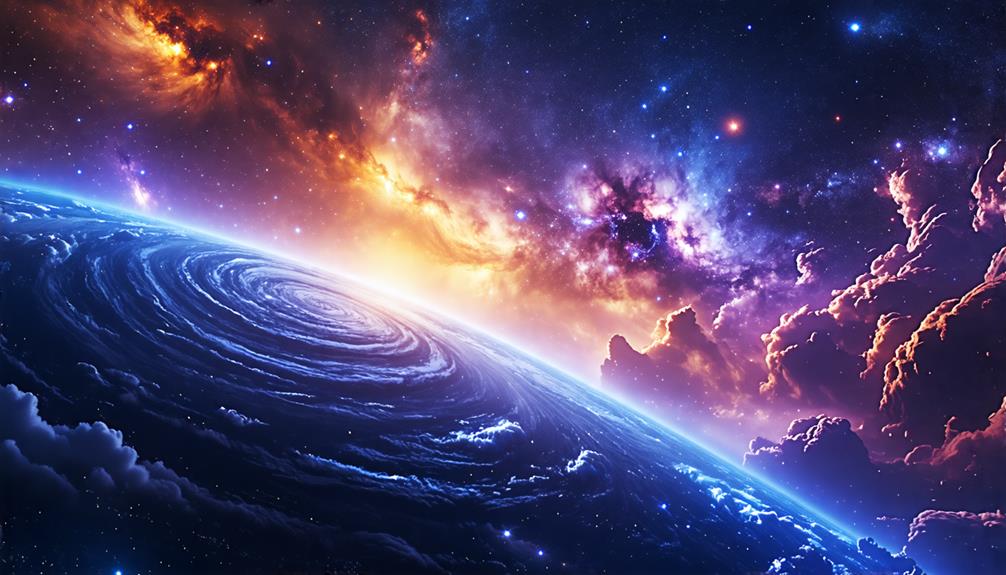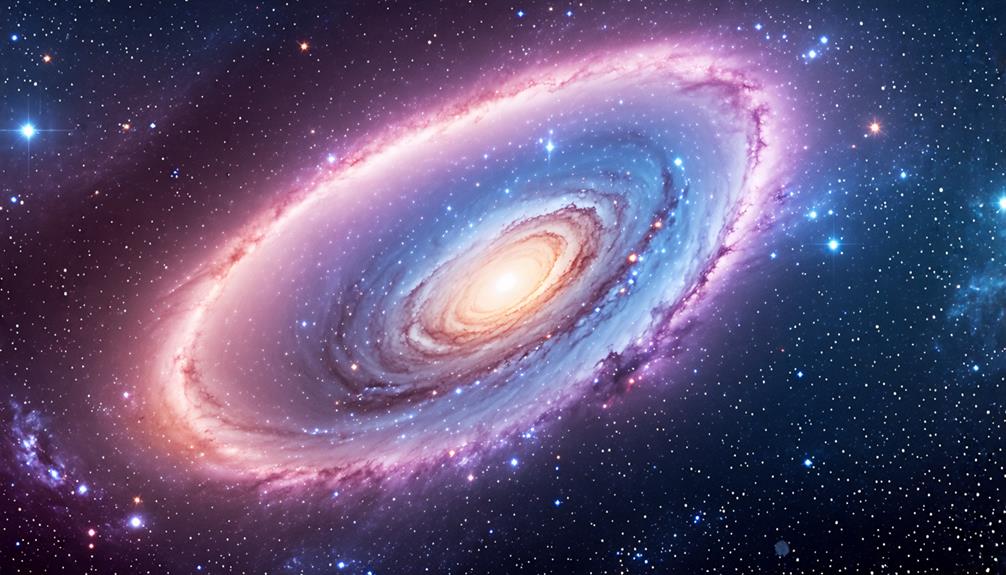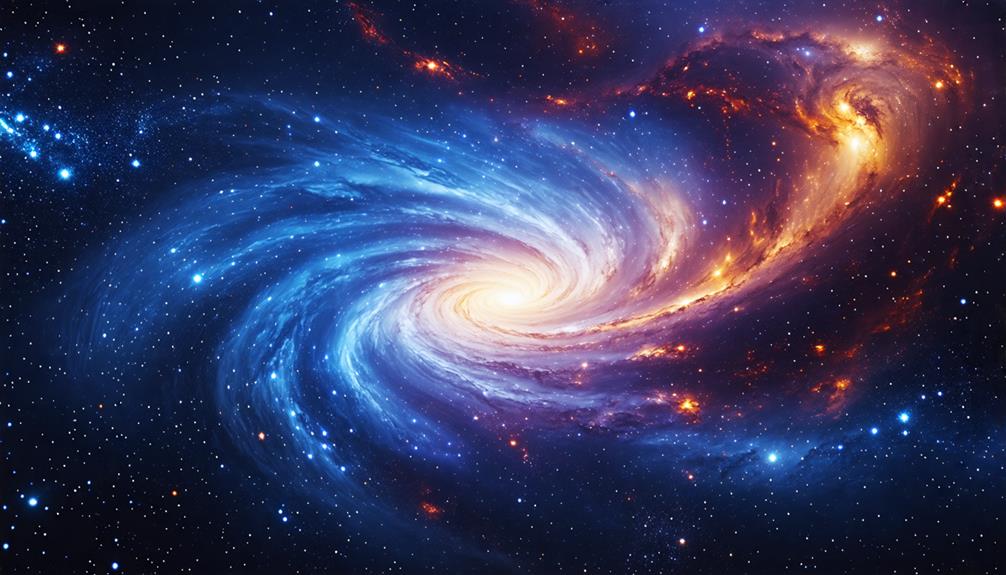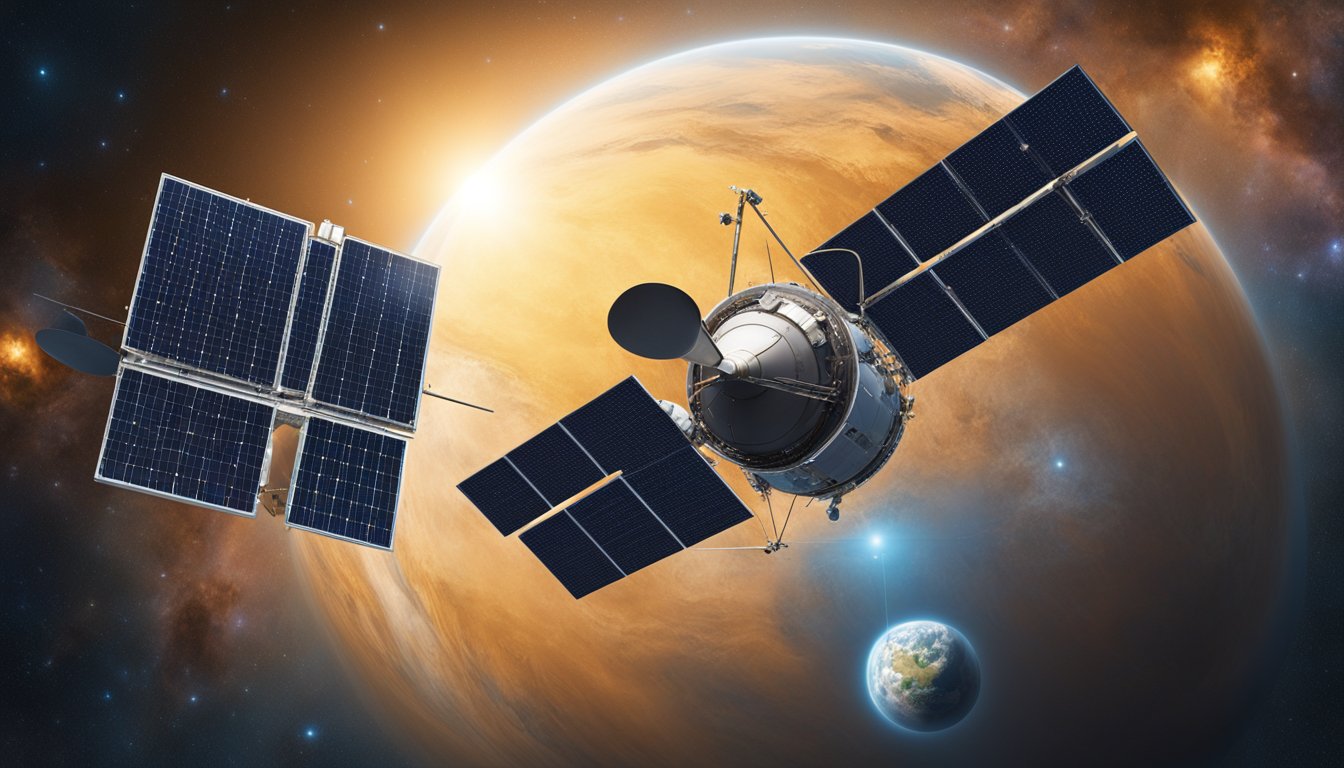The Multiverse Theory: Is Our Universe Just One of Many?
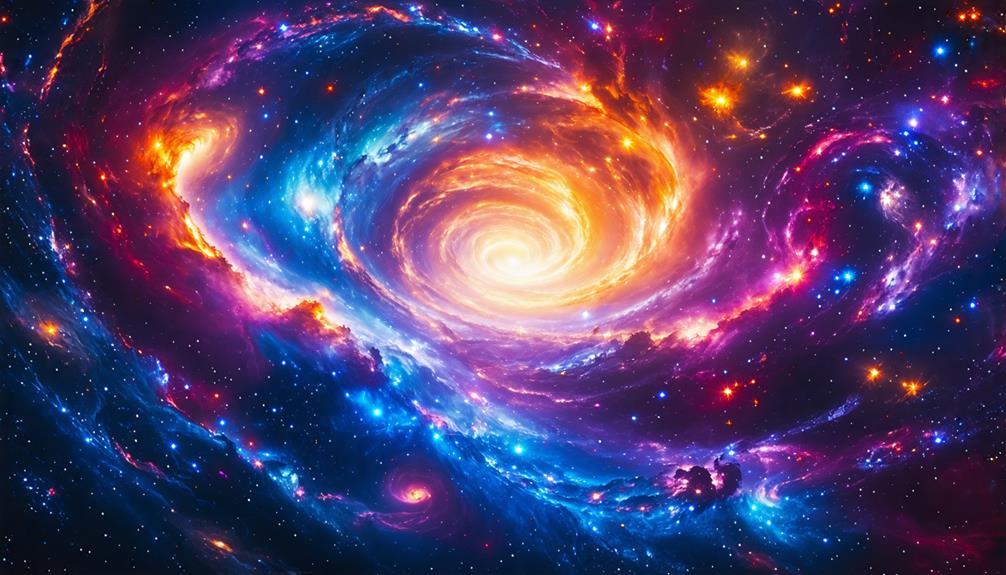
The multiverse theory proposes that our universe might be just one among countless others, each with its own unique physical properties. This idea stems from advanced scientific concepts such as cosmic inflation and quantum mechanics, which suggest a reality far beyond our current perception. However, this notion faces significant critiques regarding its testability and implications. What does this mean for our understanding of existence? The answers could lead us to reconsider everything we know about reality itself.
Understanding the Multiverse Concept
The multiverse concept proposes that countless universes exist beyond our own, each governed by its own unique physical laws and constants. This idea challenges our understanding of reality, implying that our observable universe is just one of many possibilities. The cosmological multiverse theory, introduced by Andrei Linde, suggests that these bubble universes emerged during rapid inflation after the Big Bang. Each bubble can have entirely different physical properties, leading to a vast array of potential realities.
Furthermore, quantum mechanics introduces another layer through the many-worlds interpretation proposed by Hugh Everett III. This theory posits that every quantum event causes a branching of realities, resulting in different outcomes existing simultaneously. Estimates from string theory indicate that there could be as many as 10^500 different universes within this multiverse framework, vastly expanding the possibilities of existence. As you delve deeper into the multiverse concept, you may find yourself questioning the nature of identity and choice, pondering how each decision could lead to entirely different universes, each with its own unique trajectory.
Theoretical Foundations of Universe Generation
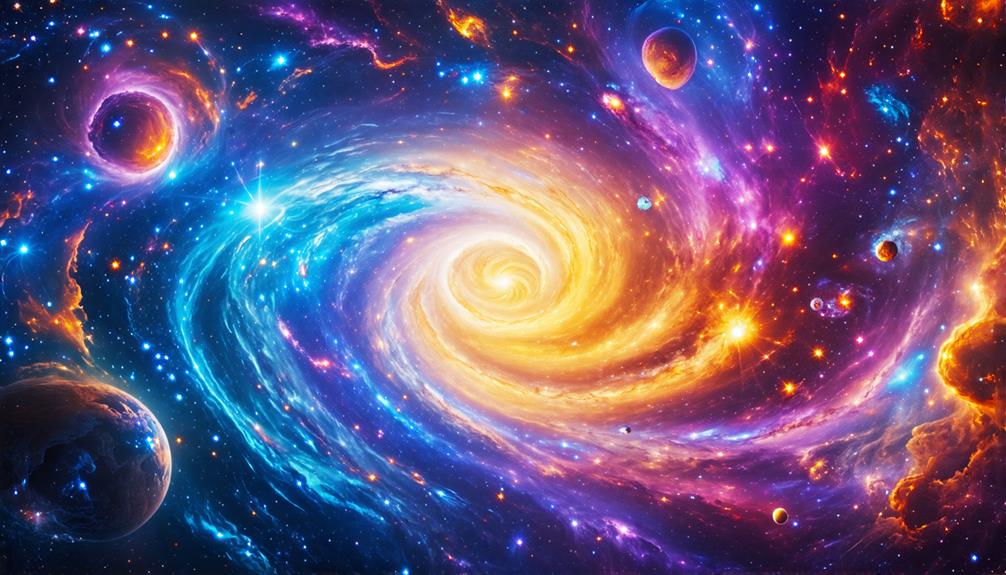
Many theoretical frameworks propose that universe generation occurs through processes such as eternal chaotic inflation and quantum field fluctuations. The concept of the multiverse, introduced by Andrei Linde, suggests that multiple regions can exist simultaneously, each governed by distinct physical laws.
| Process | Description |
|---|---|
| Eternal Chaotic Inflation | Creates infinite pocket universes through chaotic expansions. |
| Quantum Field Fluctuations | Indicates that shifts from a false vacuum state can lead to new universes. |
| Big Bang Mechanism | Proposes that decay events trigger successive Big Bangs, generating new universes. |
| Cosmic Inflation | Describes rapid expansion post-Big Bang, forming the foundation for multiverse theory. |
Alan Guth's pioneering work on cosmic inflation further supports these ideas, suggesting that our universe might be just one of many formed under similar conditions. Quantum theory posits that each energy state has the potential to spawn new realities, making the concept of universe generation seemingly boundless. This interplay between eternal chaotic inflation and quantum field fluctuations invites contemplation of the vastness of existence, hinting that our universe could be merely one thread in an infinite cosmic tapestry.
Cosmic Inflation and Its Role
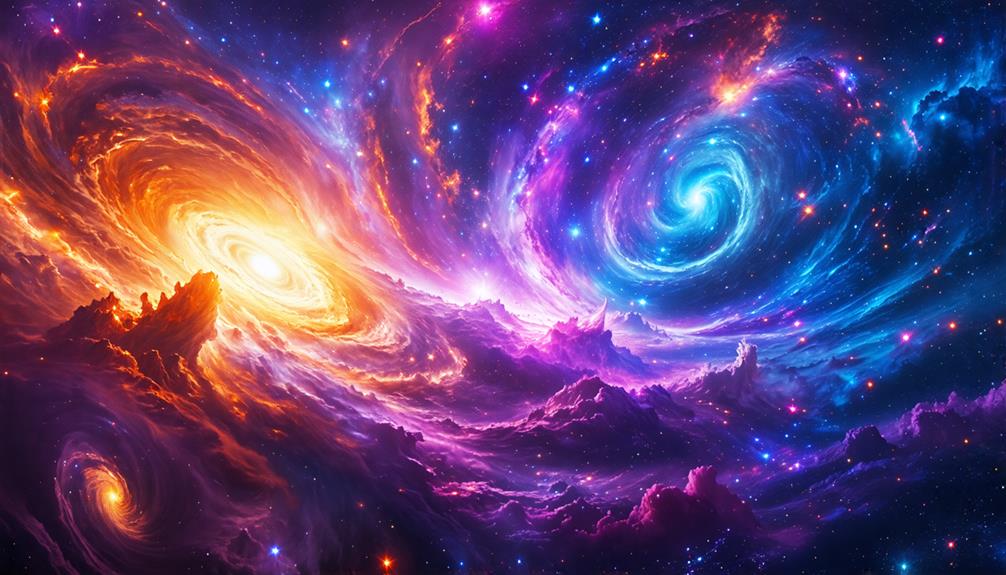
Cosmic inflation is a crucial process for understanding how the universe expanded rapidly after the Big Bang, addressing challenges like the horizon problem. During this brief period of exponential growth, regions of space expanded at extraordinary rates, potentially leading to the formation of pocket universes that are disconnected from our observable universe. These pocket universes might have different physical laws.
Andrei Linde's theory of eternal chaotic inflation proposes that this rapid expansion could continue indefinitely, resulting in the continuous creation of new universes within a vast multiverse. Evidence supporting cosmic inflation includes the cosmic microwave background (CMB) radiation, which aligns with predictions made by inflationary models and reflects a uniformity consistent with this rapid expansion.
Furthermore, cosmic inflation suggests that spontaneous universe creation can occur through quantum tunneling, allowing entire universes to emerge from a net energy of zero. This interplay between cosmic inflation and quantum mechanics opens up new possibilities in modern physics, reshaping our understanding of universe creation and the existence of a multiverse filled with diverse realities.
Types and Dimensions of the Multiverse
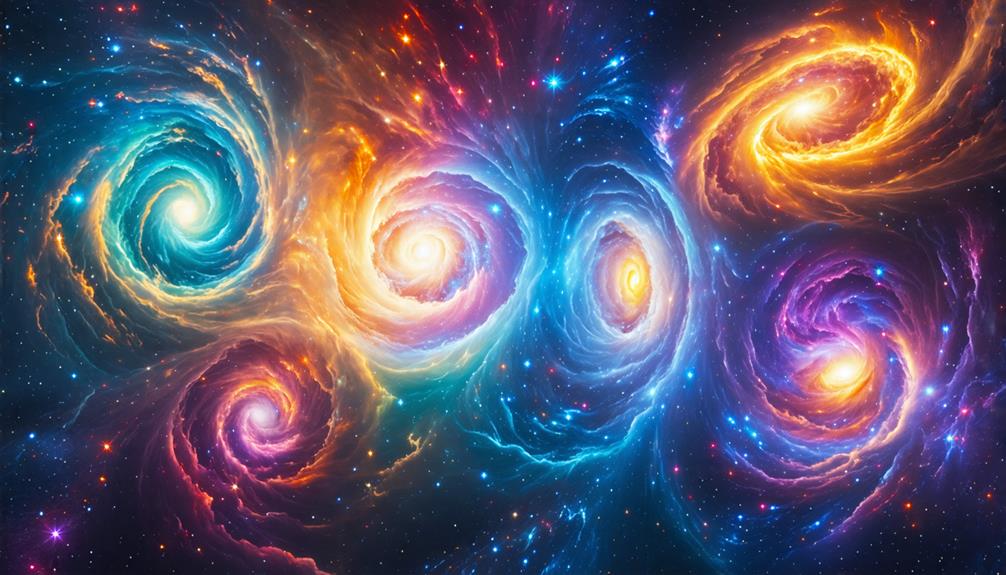
Exploring the types and dimensions of the multiverse reveals a fascinating structure that expands our understanding of reality beyond our observable universe. The multiverse can be categorized into four distinct levels, as described by Max Tegmark.
- Level I includes infinite universes with similar physical laws to our own.
- Level II features disconnected regions governed by different physical laws.
- Level III involves universes arising from quantum branching, where every quantum event creates parallel realities based on numerous outcomes.
The cosmological multiverse emerges from cosmic inflation theories, where bubble universes rapidly expand after the Big Bang, existing independently. Meanwhile, the quantum multiverse stems from the many-worlds interpretation of quantum mechanics, proposing that each quantum event spawns new realities. Estimates indicate that pocket universes in the multiverse could be at least 10^23 times larger than our observable universe, with potential sizes reaching up to 10^10^12 or even infinite. This concept challenges traditional views of existence by presenting a vast assortment of universes, each potentially governed by different laws of physics and constants.
Critiques and Alternative Perspectives
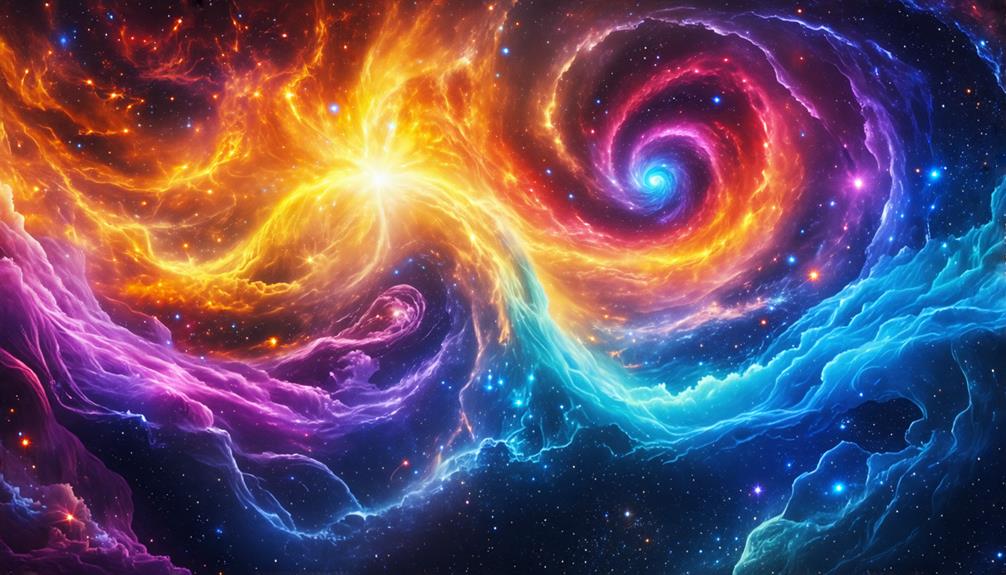
Critics frequently challenge the multiverse theory by highlighting its reliance on unprovable assumptions and questioning its scientific validity. They argue that the theory lacks observable evidence. Thinkers like George Ellis prefer the term 'universe' with many expanding domains, while Paul Davies notes that the theory is incomplete, relying on numerous assumptions and raising questions about the origin of the laws that support multiple universes.
Here's a quick overview of some critiques:
| Critique | Explanation |
|---|---|
| Unprovable Assumptions | The theory relies on assumptions that cannot be empirically tested. |
| Challenges to Scientific Method | Critics argue it ventures into metaphysics rather than empirical science. |
| Philosophical Concerns | Some see parallels with religious concepts of a creator. |
The debate about the multiverse's legitimacy continues. Some physicists believe its implications could redefine our understanding of existence, while others remain skeptical, firmly grounding their arguments in the scientific method and observable evidence.
Conclusion
The multiverse theory presents a fascinating yet complex idea that challenges our understanding of reality. The potential existence of countless universes expands our imagination but also raises significant questions about empirical evidence and philosophical implications. As science evolves, so does the debate around this theory. Whether accepted or met with skepticism, the multiverse prompts us to think deeply about the nature of existence and our place within it.

